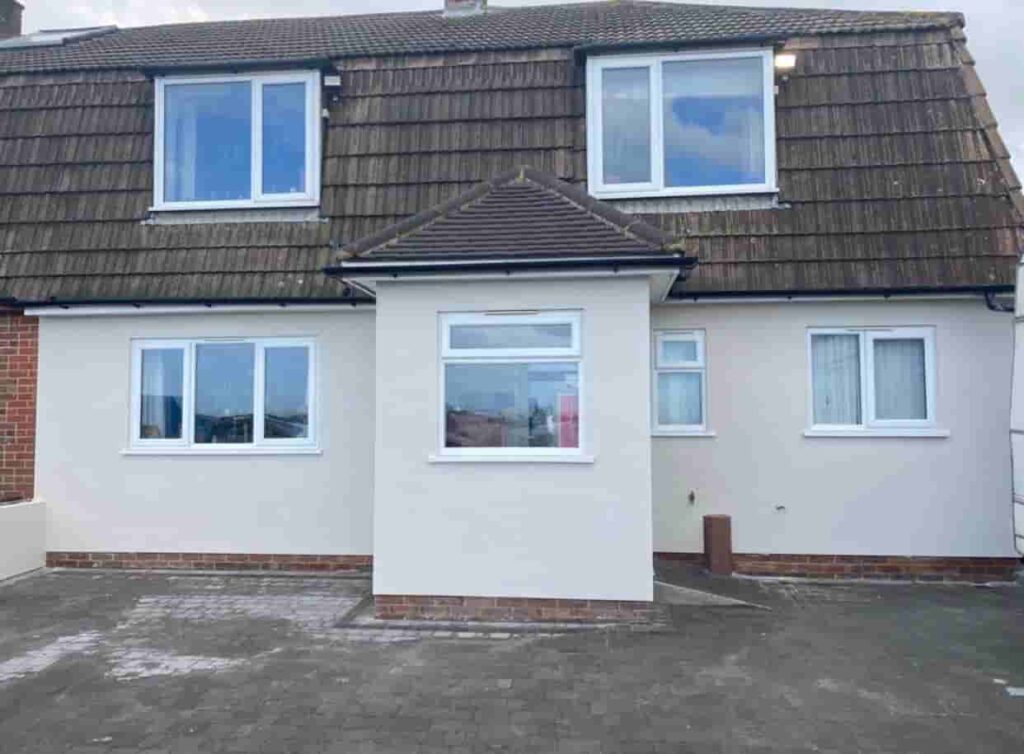As energy costs continue to rise, many homeowners in Warminster, Wiltshire, are looking for effective ways to reduce their energy consumption. One often-overlooked solution is roof shading, which can play a significant role in keeping your home cooler during the warmer months and lowering the need for excessive air conditioning. At MCM Roofing Repairs Warminster, we understand how important it is to strike a balance between comfort and energy efficiency. In this blog, we’ll explore how roof shading can help reduce your home’s energy consumption and contribute to a more sustainable lifestyle.
1. Understanding Roof Shading and Its Benefits
Roof shading involves using various methods to block or reduce the amount of direct sunlight that hits your roof. By limiting the exposure of your roof to intense sunlight, you can significantly reduce the amount of heat that enters your home. This, in turn, decreases the need for artificial cooling methods like fans or air conditioning, leading to lower energy consumption.
- Lower Cooling Costs: When your roof is exposed to direct sunlight, it absorbs a substantial amount of heat, which then radiates into your home. This forces your cooling systems to work harder to maintain a comfortable temperature. Proper roof shading reduces this heat absorption, making it easier to regulate indoor temperatures without relying heavily on energy-consuming appliances.
- Extended Roof Lifespan: Excessive exposure to UV rays can cause roofing materials to degrade over time. Shading your roof can help protect it from the sun’s harmful effects, extending the lifespan of your roof and reducing the need for repairs or replacements.
2. Methods of Roof Shading
There are several ways to effectively shade your roof, depending on your home’s structure, your budget, and your environmental preferences. Here are some of the most common methods:
- Green Roofing: One of the most eco-friendly roof shading options is installing a green roof. This involves covering the roof with vegetation, such as grass or plants, which not only provides natural shading but also helps with insulation. Green roofs absorb heat, keeping your home cooler in the summer and warmer in the winter. They also contribute to better air quality and support biodiversity, making them an excellent choice for environmentally conscious homeowners.
- Roof Overhangs and Eaves: Installing larger overhangs or eaves can provide natural shading to your roof. These architectural features block sunlight from hitting the roof directly during the hottest parts of the day, helping to reduce heat absorption. Overhangs can also shade windows, reducing the amount of direct sunlight entering your home and further enhancing energy efficiency.
- Solar Reflective Coatings: Another effective solution is applying a solar-reflective coating to your roof. This coating reflects a significant portion of the sun’s rays, preventing them from being absorbed by your roof. These coatings are particularly beneficial for homes with flat or low-pitched roofs, which are more exposed to direct sunlight. Reflective coatings not only reduce heat gain but also protect your roof from UV damage.
- Shade Structures: For homes with roof terraces or flat roofs, installing shade structures such as pergolas or canopies can be a practical way to shield the roof from direct sunlight. These structures provide shading while still allowing airflow, helping to cool the surface and reduce heat penetration.
3. The Importance of Choosing the Right Roofing Material
In addition to shading methods, the type of roofing material you choose can have a significant impact on your home’s energy efficiency. Some materials naturally reflect more sunlight, while others absorb heat more readily.
- Cool Roofing Materials: Cool roofs are designed to reflect more sunlight and absorb less heat than traditional materials. Options such as light-coloured tiles, metal roofs, or specially coated asphalt shingles can help keep your roof cooler. These materials are especially effective when combined with roof shading strategies.
- Insulated Roof Systems: Adding insulation beneath your roof can complement roof shading efforts by preventing heat from penetrating into your home. Insulated roof systems are particularly beneficial in areas like Warminster, where temperature fluctuations can be significant throughout the year.
4. Environmental and Financial Benefits
By implementing roof shading strategies, you can enjoy a range of environmental and financial benefits:
- Reduced Carbon Footprint: Lower energy consumption translates to fewer carbon emissions, contributing to a greener, more sustainable home. This is especially important as the UK works towards reducing its overall carbon footprint.
- Lower Energy Bills: By keeping your home cooler naturally, roof shading helps reduce your reliance on air conditioning and fans, which in turn lowers your energy bills. Over time, the savings on your utility costs can more than justify the initial investment in roof shading solutions.
- Increased Property Value: Eco-friendly upgrades, including energy-efficient roofing, can increase the value of your home. Potential buyers are increasingly interested in properties that offer long-term energy savings and environmentally conscious features.
Conclusion
Roof shading is an often-overlooked but highly effective way to reduce your home’s energy consumption while protecting your roof and contributing to a more sustainable environment. Whether through green roofing, solar-reflective coatings, or insulated roof systems, these strategies can make a significant difference in how your home handles heat. At MCM Roofing Repairs Warminster, we are committed to helping homeowners in Warminster, Wiltshire, make the most informed decisions about their roofing needs, ensuring both energy efficiency and long-term value.
Call us on: 01985 802 992
Click here to find out more about MCM Roofing Repairs Warminster
Click here to complete our contact form and see how we can help with your roofing repair.

